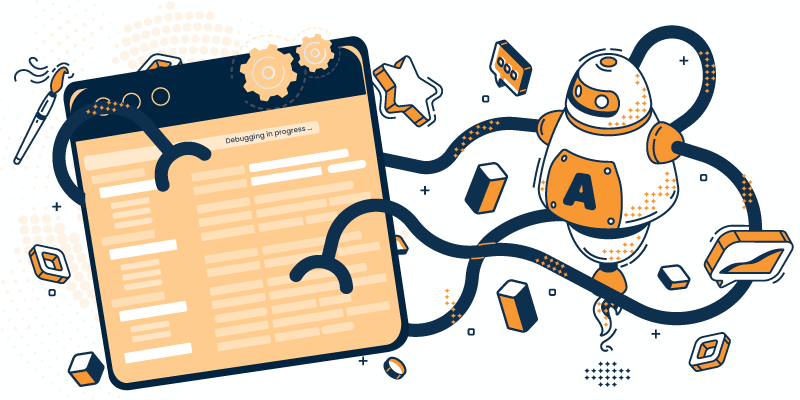Ever wondered if your software could fix its own bugs? In this article, we’ll disclose some of the latest strides in AI-driven debugging tools, shedding light on how machine learning algorithms are redefining the process of detecting and resolving software issues in real-time. This new approach not only expedites bug fixes but also significantly elevates software reliability.
The Challenge of Traditional Debugging
Traditionally, debugging involves a blend of manual code scrutiny, reliance on static analysis tools, and iterative testing. However, as the complexity of modern software expands, these methods fall short in addressing the pressing need for swift and precise bug detection and resolution.
AI-Powered Debugging: An Intelligent Overhaul
Real-Time Detection with Predictive Analytics
AI-powered debugging introduces a game-changing paradigm by offering real-time bug detection. Equipped with predictive analytics, these algorithms analyze code on the fly, preemptively flagging potential problems before they manifest. This proactive approach empowers developers to prevent issues beforehand, minimizing the debugging effort in later stages of development.
Consider a scenario where an e-commerce platform uses AI-driven tools to analyze its codebase. Predictive analytics algorithms can flag potential issues in the payment processing module before they manifest, ensuring smooth customer experience.
Intelligent Bug Resolution: Beyond Diagnosis
Going beyond mere diagnosis, AI-powered tools also provide intelligent bug resolution. Identifying the root cause is just the beginning; these tools suggest optimized solutions based on historical code patterns and successful resolutions. Developers can leverage these AI-driven insights to expedite the debugging process and foster knowledge transfer within their teams.
Continuous Learning and Improvement
AI-powered debugging systems are not static entities; they evolve. Constantly learning from interactions and codebases, these algorithms refine their understanding of patterns and error scenarios. This perpetual learning loop translates into heightened accuracy and efficiency over time.
Implementing AI-Powered Debugging: Strategic Move
Integration of AI-powered debugging tools into your workflow is akin to making a strategic investment in software reliability. The first step is to identify tools compatible with your programming languages, development environments, and project specifics. Many modern IDEs offer plugins or extensions that seamlessly incorporate AI-powered debugging capabilities. Consider incorporating popular tools like Testim.io, Mabl, and Codacy for smooth integration into your projects.
Another step is to foster a collaborative culture within your development team. AI-powered debugging tools thrive on active developer participation — contributing to training data and sharing insights about unique code patterns and bug resolutions.

Disadvantages of AI Debugging
While AI-powered debugging brings significant advantages to the software development landscape, there are potential drawbacks that developers should be mindful of.
1. Overreliance on Predictive Algorithms
One potential con of AI-powered debugging is the risk of overreliance on predictive algorithms. Development teams, impressed by the tool’s accuracy, might start relying solely on the AI predictions without thoroughly reviewing the flagged issues. In a rush to meet deadlines, critical logic errors in the business logic might be overlooked, as the team assumes the AI will catch all issues. This overreliance can result in the deployment of flawed software, leading to potential performance issues or security vulnerabilities.
2. Complexity and Interpretability
Another challenge is the complexity and interpretability of AI-driven solutions. Machine learning models used in debugging are often considered as “black boxes,” making it challenging for developers to understand how certain decisions are reached. Lack of transparency in the decision-making process may hinder developers from gaining insights into the root causes of issues identified by the AI system. The resulting hesitation may lead to delays in implementing potentially beneficial changes or, conversely, blindly accepting suggestions without a clear understanding of their implications.
The Future of Debugging: Harmony Between AI and Developers
As we are stepping deeper into 2024, the future of debugging is an amalgamation of human expertise and artificial intelligence. The collaboration between developers and intelligent algorithms marks a transformative era in software reliability. By harnessing the capabilities of AI-powered debugging tools, developers can not only mitigate issues in real time but also cultivate a resilient and efficient software development process.
Most importantly, AI-based debugging isn’t just a new tool; it’s an investment in the future of software development — a future where AI and human ingenuity synergize to create robust, reliable, and innovative applications. Let’s embrace this evolution, and allow the collaboration between AI and developers to redefine the world of IT.